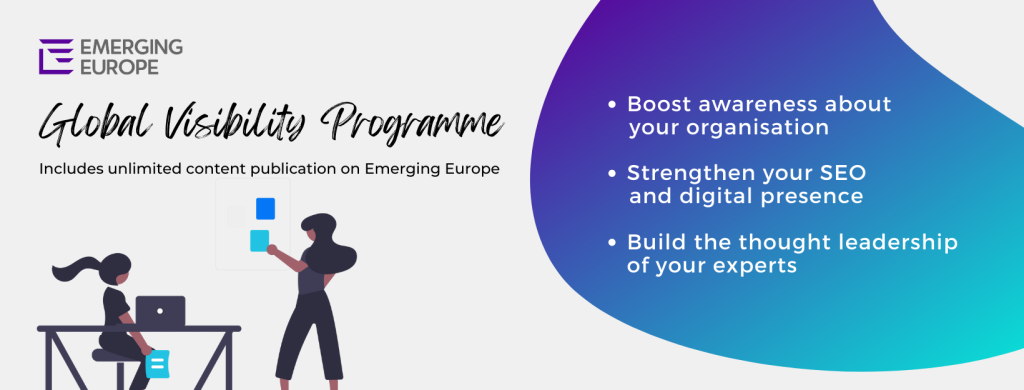Research shows that organisations that doubled down on employee engagement in times of economic uncertainty performed twice as well financially as organisations that deprioritised it. Can you afford to treat the employee experience as anything other than a business priority?
Your employees are feeling the strain. Too many meetings. Too many emails and messages. Too many siloes and not enough time for team collaboration and connection. The huge inflow of data, information and notifications in the modern workplace has outpaced our ability to process it, placing many employees in ‘digital debt’. They simply have too many things to do and not enough time to do them in.
- Digital innovation and sustainability offer huge potential benefits for CEE firms
- How Microsoft’s first datacentre region in Poland can offer new opportunities for the digital economy
- ‘Sooner or later, we are all moving to the cloud’
Workers spend their workdays trying to get out of this debt, working longer hours more frequently than ever before. The outcome? These increased working hours have led to feelings of burn out. Let’s be honest, this feeling makes it harder for people to be innovative and creative and twice as likely to want to leave their organisations, to find that balance in their lives. Keeping employees motivated and engaged has never been more crucial than now.
So how can leaders help ‘refund’ the time and energy employees feel they have lost? They can start by tackling three key ‘villains’ that are stealing their employees’ valuable time – the Broken Meeting, the Information Labyrinth and the Blank Page.
Fixing ‘The Broken Meeting’
Workers are joining more meetings than ever before, but these catchups are not necessarily working. Often, employees are joining hour-long meetings for mere minutes of insights, while being distracted by a barrage of notifications and likely not fully engaging with the information that is being shared.
This waste of time means that just one in three workers in Europe think that they would even be missed if they couldn’t join most of their meetings.
To fix meetings and give time back to employees, leaders must think about the environment they are creating and how they set norms that help workers have fewer meetings and more focused time. For example, consider introducing meeting-free days to allow the team to get on with value creating tasks; or limiting both the number of meetings and the number of attendees to the essentials to prevent people joining endless calls.
Similarly, the right tools can play a major role in making meeting attendance more effective. For example, practices like recording meetings and archiving them, so people who did not attend can watch on-demand if needed, free up time and improve asynchronous working. AI tools can help by summarising meeting notes and next steps to give people key information to take activities forward.
Navigating ‘The Information Labyrinth’
Finding what we need, when we need it, can feel like getting lost in a maze at times. Searching files, chats or endless email threads steals time from employees. In fact, a heavy email user will spend almost nine hours a week going through emails. That’s more than one full day a week that could be spent more effectively, delivering value to the business!
Some 54 per cent of workers in Poland say they struggle with having enough time and energy to get their work done.
When it comes to ‘refunding’ employee time, finding ways to make people more efficient will be the key and leaders can set the example. Providing clear guidelines about how information is stored to make finding it more efficient, being intentional about what emails are sent and limiting unnecessary communication can all help.
On top of this cultural shift, leaders need to equip employees to be able to find the information they need quickly. For example, the growth of natural language technology is already speeding up information retrieval by helping ask for information in a more intuitive way.

Skipping ‘The Blank Page’
We have all been faced with a blank page. An email, a document, a presentation. Getting started is often the most difficult part of a task. And with workers reporting that being uninspired is the major blocker to productivity, skipping the blank page stage and going straight to a first draft is a game changer.
By using generative text technology, employees can have that first draft in seconds. They can then enhance the quality and adjust the tone to make the output more personal, humble, or more formal. All of which increases chances of people reading and engaging with the content, and feeling more connected.
By using technology employees will be able to build in more time for rest, balance, and other projects. Just like our bodies after a run, we need to give ourselves time to recharge to stay at peak performance and enjoy it.
With 60 per cent of workers in the Czech Republic saying that they struggle to have enough time and energy to get their work done, AI tools are coming at the exact right time.
Moving forward, as we optimise the employee experience with both new tools and company cultures, we stand to not only prevent burnout in our workforces but also accelerate value creation in our businesses with greater levels of innovation and strategic thinking.
Research shows that organisations which doubled down on employee engagement in times of economic uncertainty performed twice as well financially as organisations that deprioritised it. I will end with a question to leaders – can you afford to treat the employee experience as anything other than your top priority?
This article is part of Digital Future of CEE, a regional discussion series, powered by Emerging Europe, Microsoft and PwC.
Unlike many news and information platforms, Emerging Europe is free to read, and always will be. There is no paywall here. We are independent, not affiliated with nor representing any political party or business organisation. We want the very best for emerging Europe, nothing more, nothing less. Your support will help us continue to spread the word about this amazing region.
You can contribute here. Thank you.







Add Comment